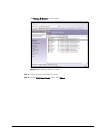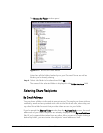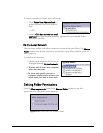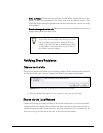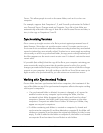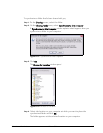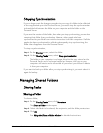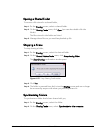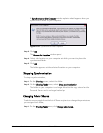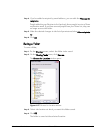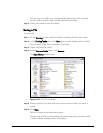
Mirra Manual for Windows Release 2.2 108
Server. This allows people to work on the same folder, each on his or her own
computer.
For example, suppose that Computers 1, 2, and 3 are all synchronized to Folder A
on a Personal Server. Changes made on Computer 1 to a file in that folder are
automatically reflected in the copy of that file on the Personal Server and then, in
turn, in the copy on Computers 2 and 3.
Synchronizing Versions
Mirra saves up to eight versions of a file to protect against permanent loss of
data. However, Mirra does not provide version control. It creates versions on a
first-come-first-served basis and orders them according to when they were backed
up and not when they were actually edited. So when two or more people are working
concurrently on a file in a synchronized folder, the copy most recently backed up to
the Mirra appears as the most recent version even if it doesn’t contain the most
recent edits.
It’s possible (but unlikely) that the copy of the file on your computer containing your
more recent edits may be overwritten by another person's edits. As a result,
changes you made to the file may exist only in a previous version of the file no longer
present on your computer, but still residing on the Mirra. Since Mirra saves up to
eight versions of a synchronized file, you can retrieve an overwritten version.
Working with Synchronized Folders
Once a folder has been synchronized with other computers, the treatment of the
copy of the folder on any of the synchronized computers affects the copies residing
on everyone’s computers:
• If a synchronized folder is deleted, its name is changed, or it’s moved to
another location on any computer synchronizing the folder, the files
contained in that folder disappear from the Mirra and from the others’
computers. However, the folder itself (now empty) remains on the other
computers. If anyone now adds files or folders to that sync’d folder, they
appear on everyone’s computers.
• If a folder containing sub-folders is created on computer A, shared and
synchronized on computer B, and then deleted on computer B, the folder still
resides on computer A and contains the original sub-folders, but they’re now
empty. If a file is added to the folder on computer A, the folder is re-created
on computer B and contains the new file but no sub-folders.



